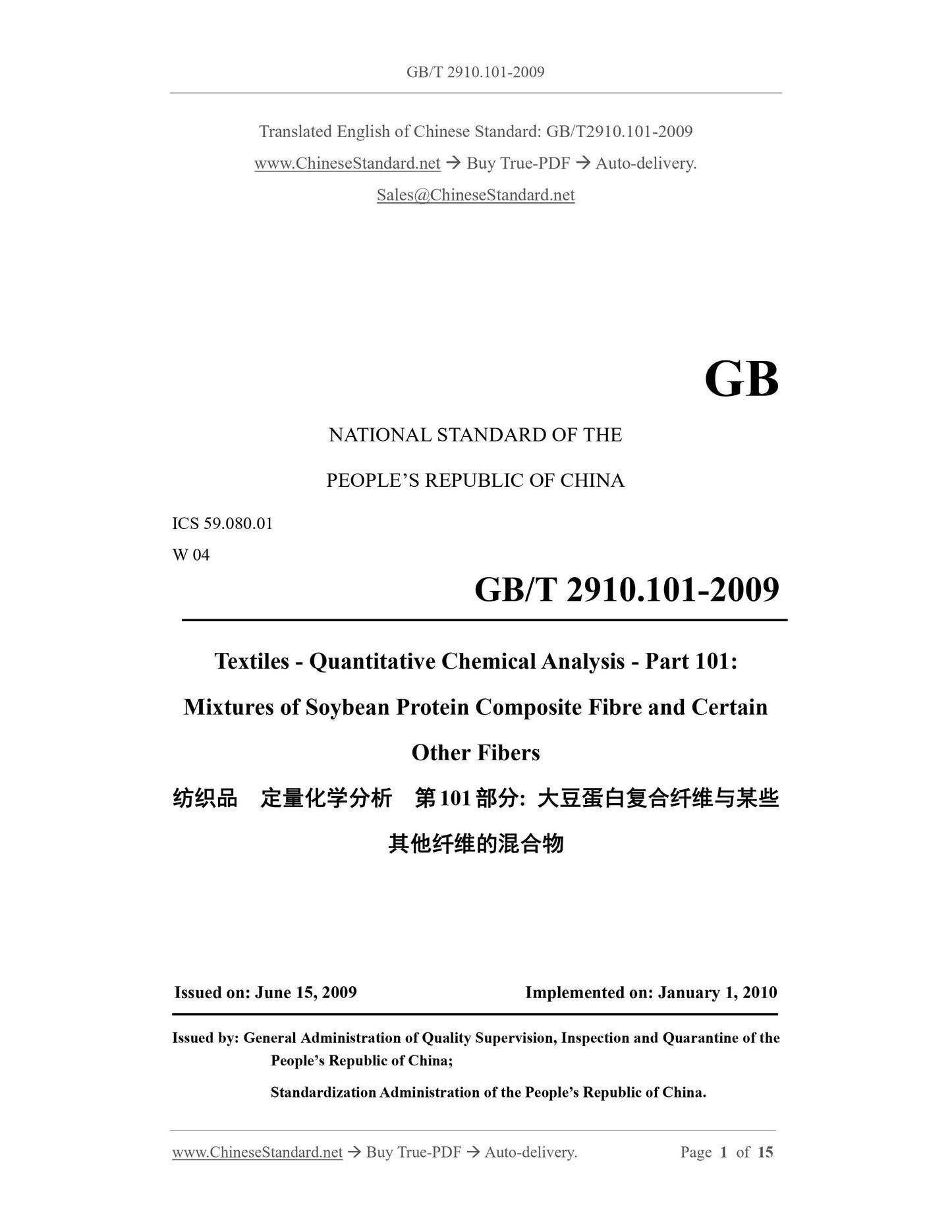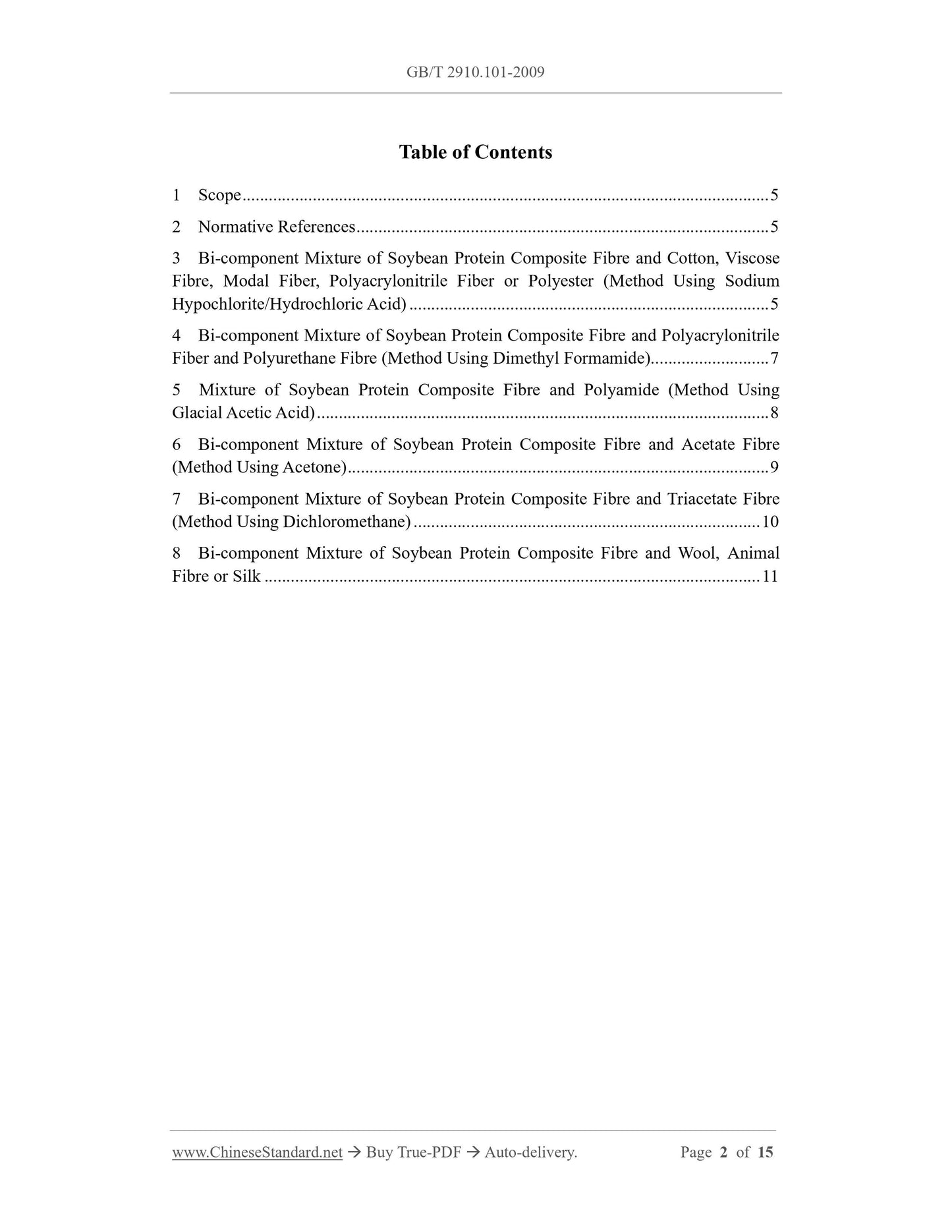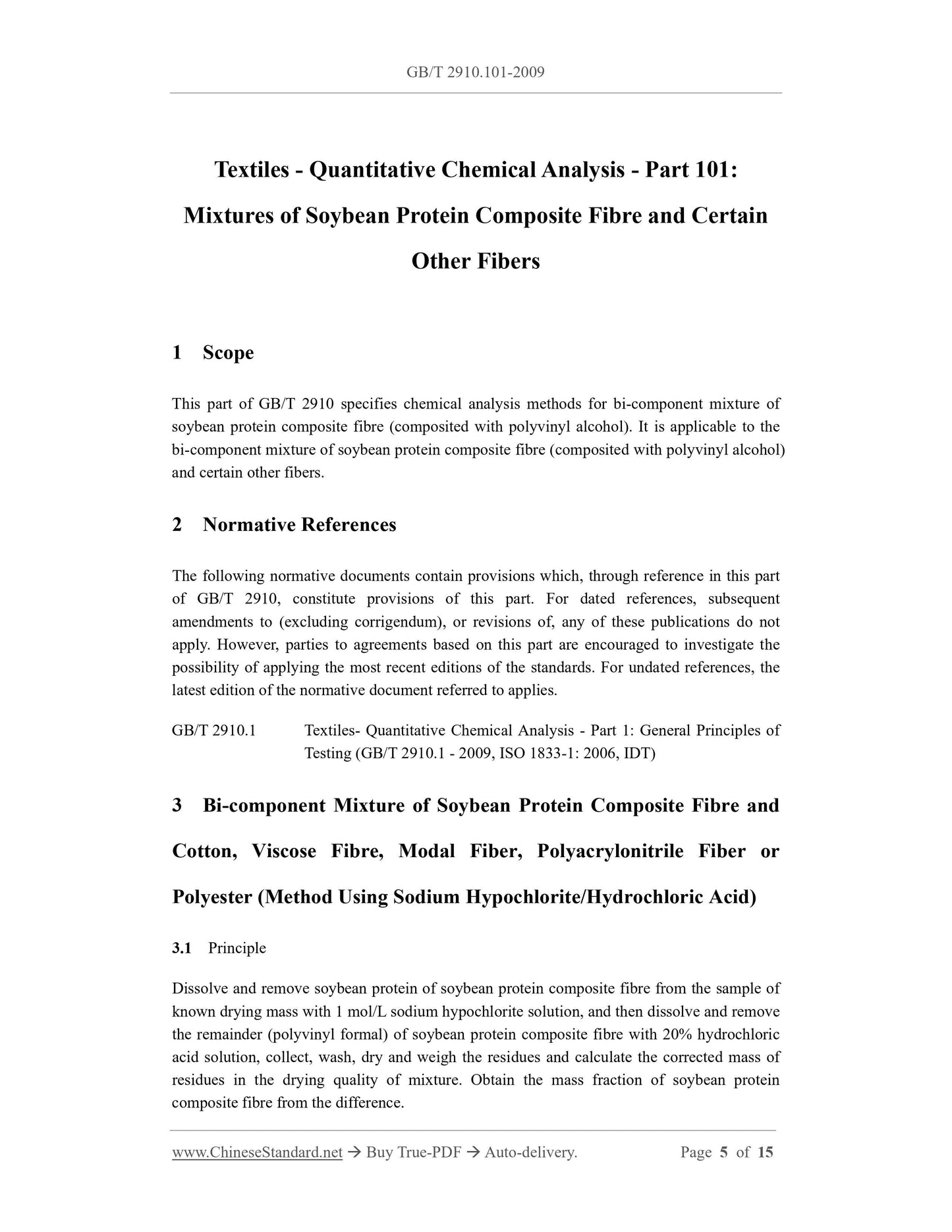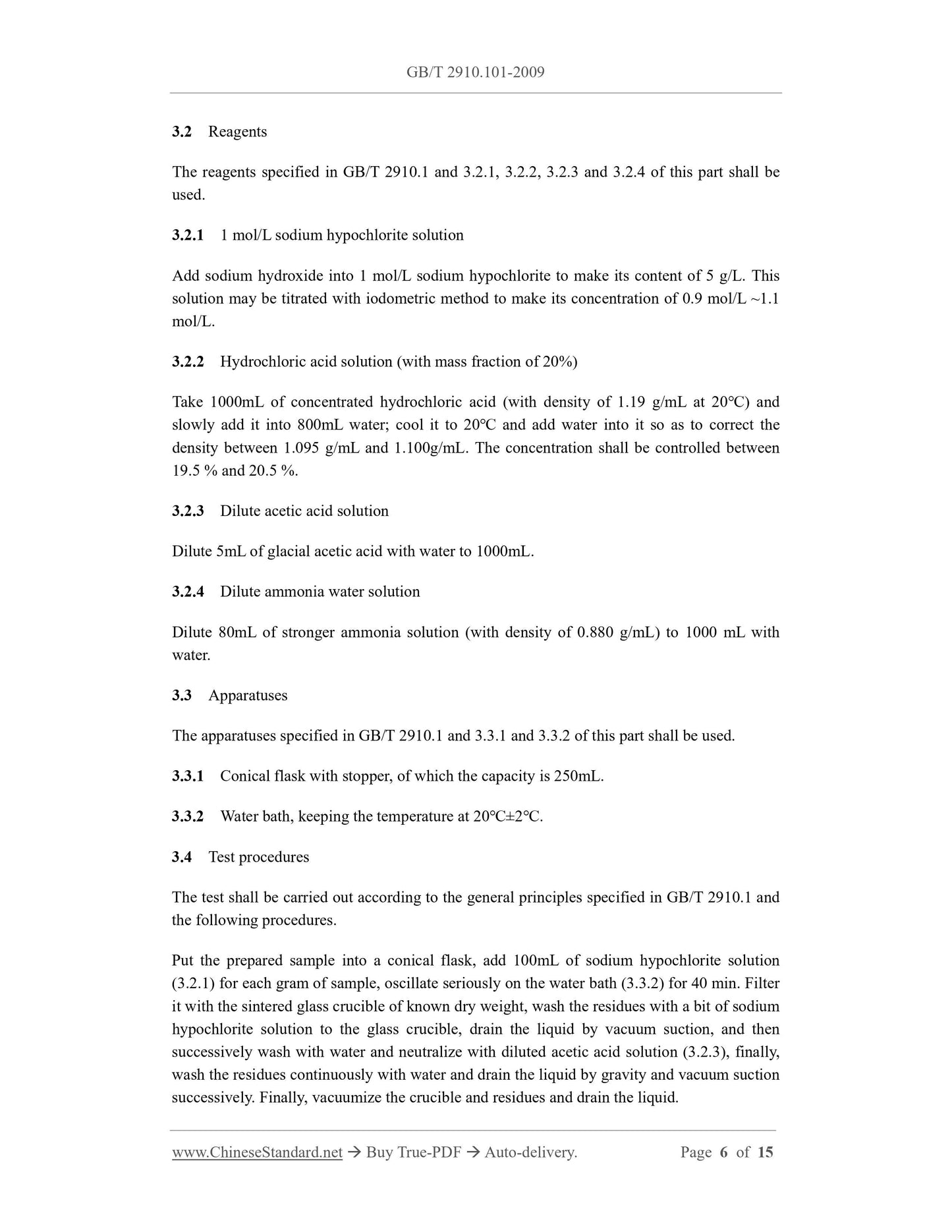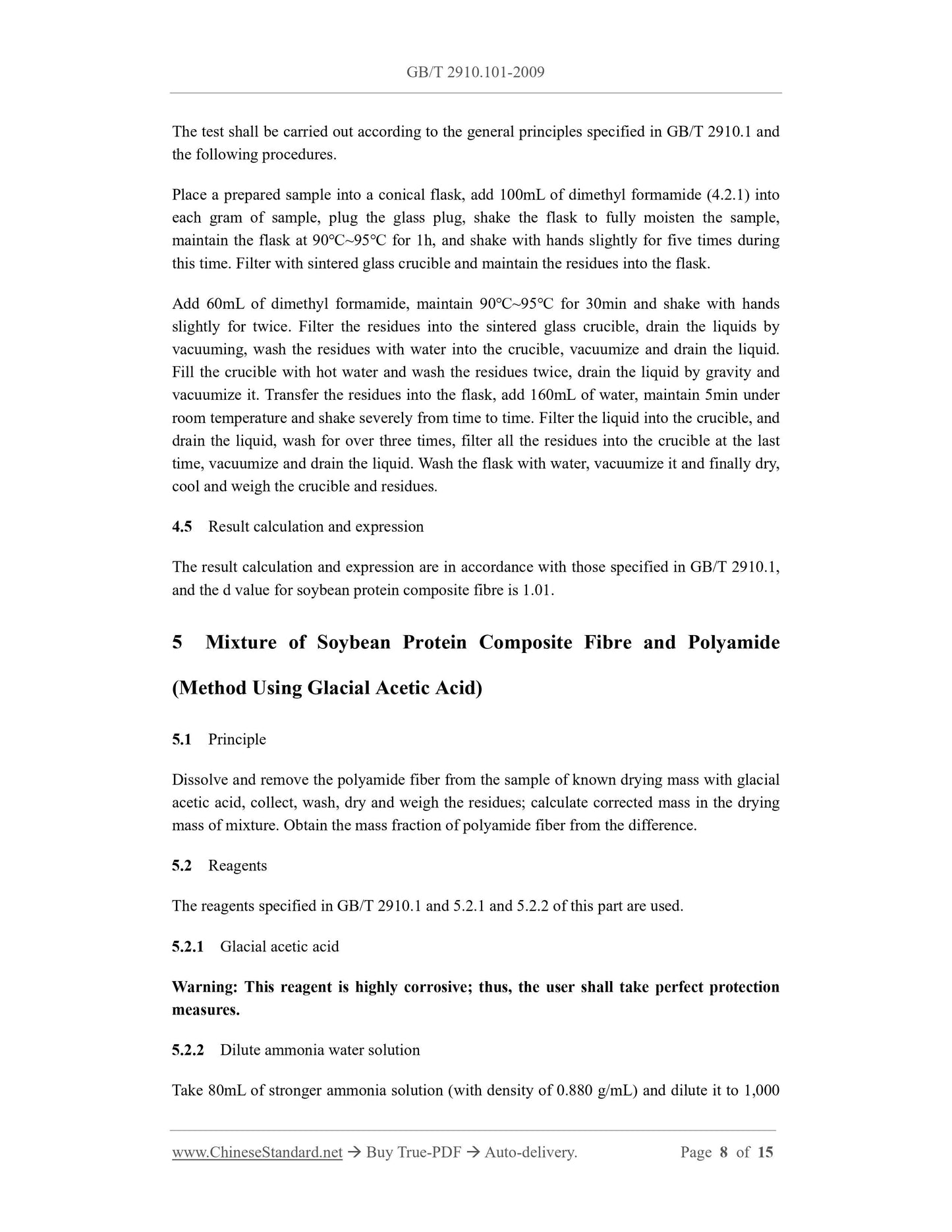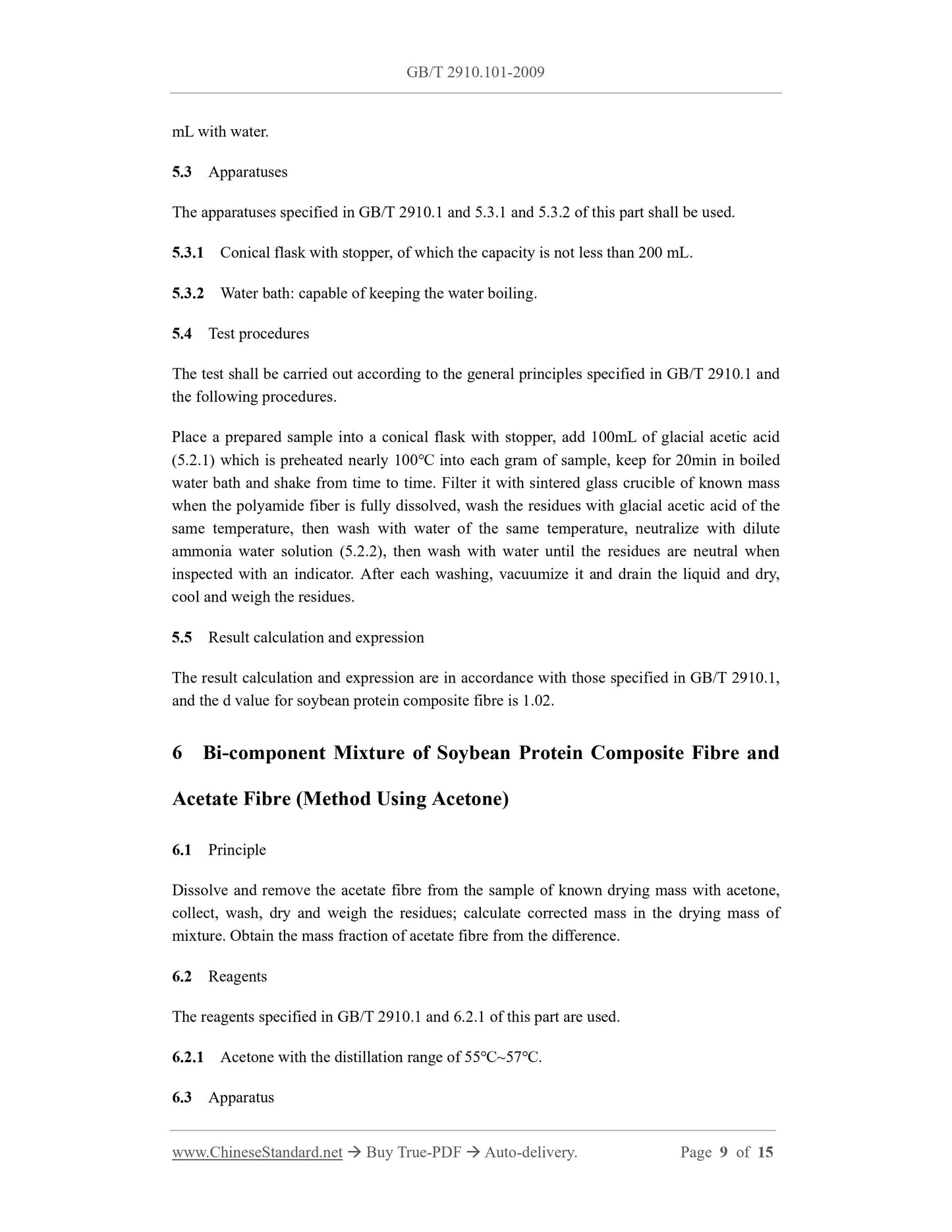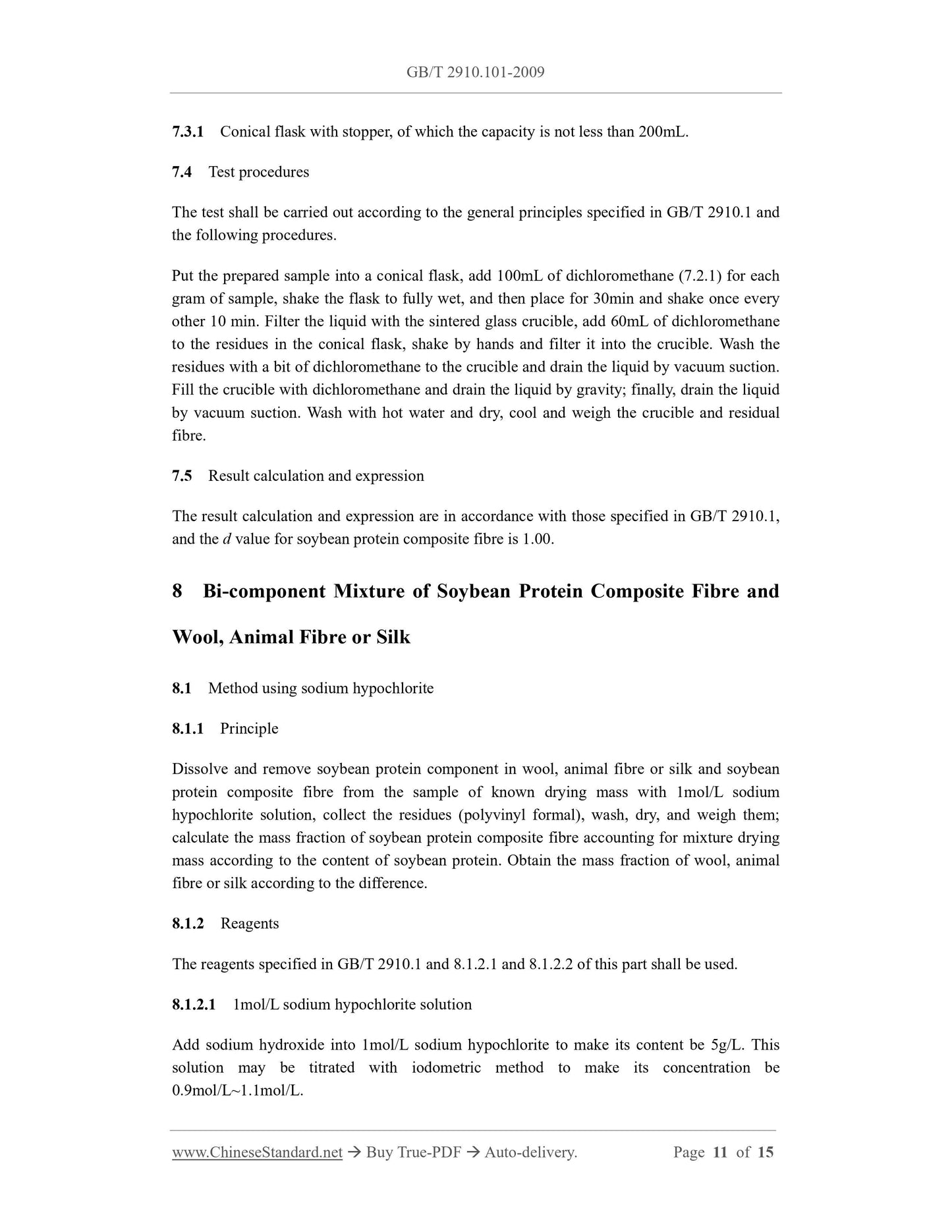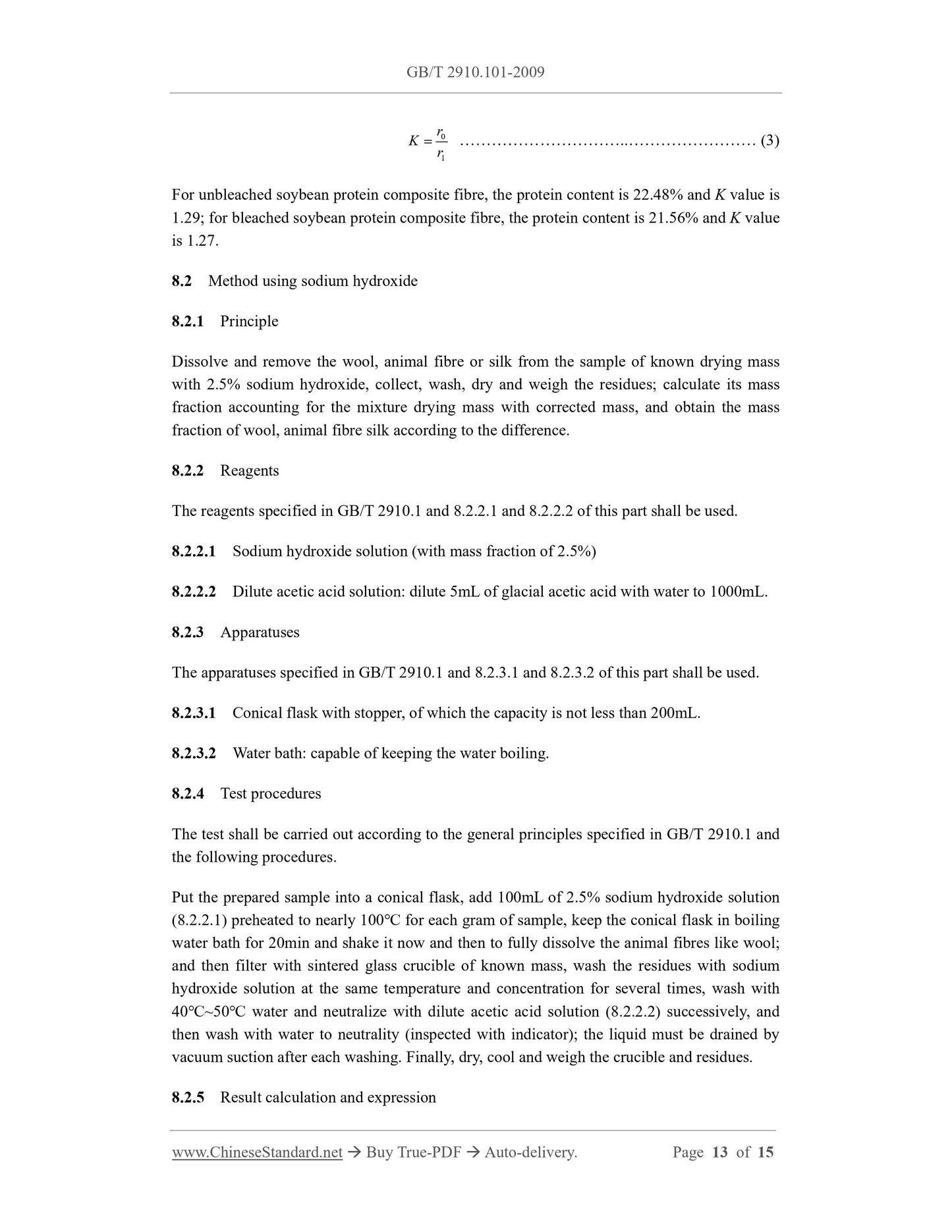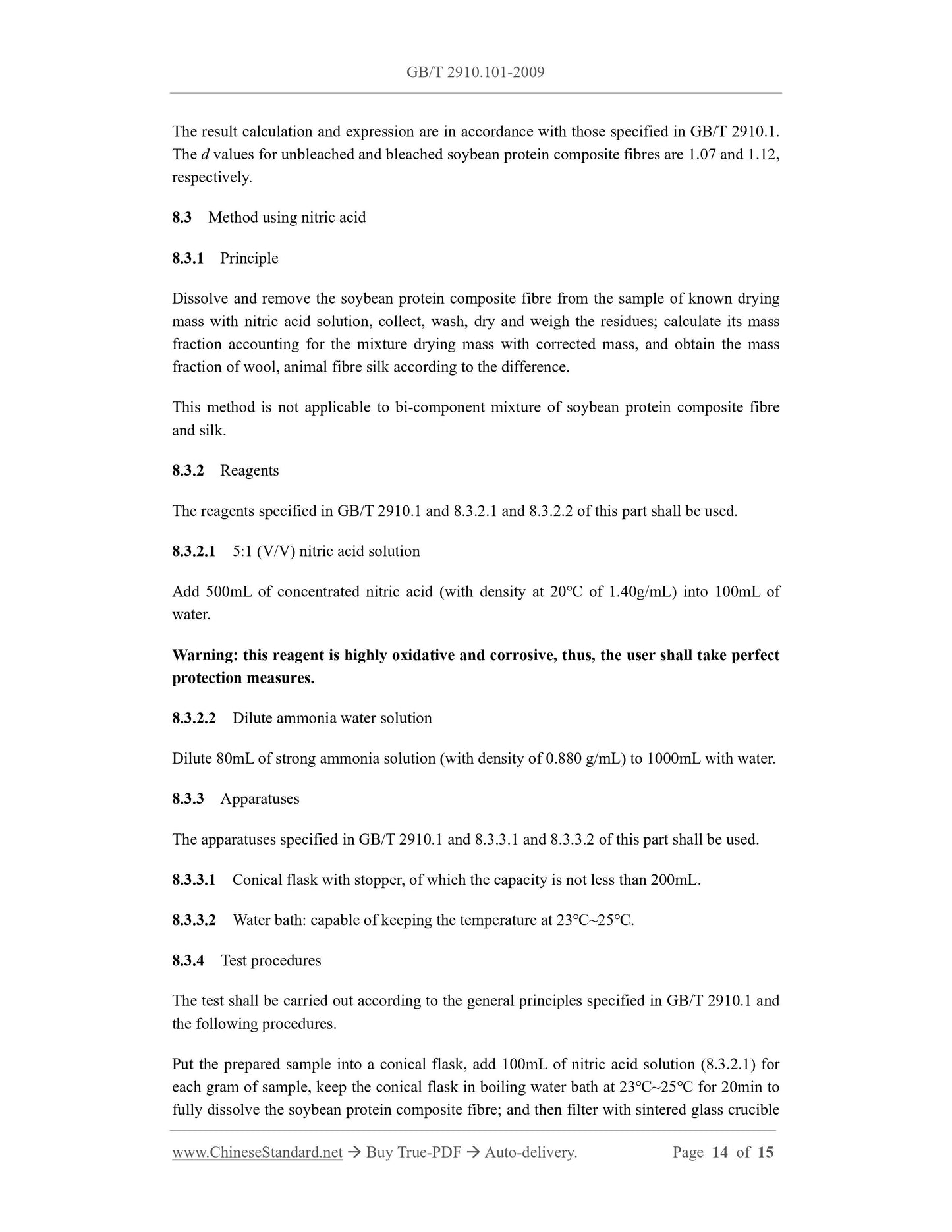1
/
of
9
www.ChineseStandard.us -- Field Test Asia Pte. Ltd.
GB/T 2910.101-2009 English PDF (GB/T2910.101-2009)
GB/T 2910.101-2009 English PDF (GB/T2910.101-2009)
Regular price
$105.00
Regular price
Sale price
$105.00
Unit price
/
per
Shipping calculated at checkout.
Couldn't load pickup availability
GB/T 2910.101-2009: Textiles -- Quantitative chemical analysis -- Part 101: Mixtures of soybean protein composite fibre and certain other fibers
Delivery: 9 seconds. Download (and Email) true-PDF + Invoice.Get Quotation: Click GB/T 2910.101-2009 (Self-service in 1-minute)
Newer / historical versions: GB/T 2910.101-2009
Preview True-PDF
Scope
This part of GB/T 2910 specifies chemical analysis methods for bi-component mixture ofsoybean protein composite fibre (composited with polyvinyl alcohol). It is applicable to the
bi-component mixture of soybean protein composite fibre (composited with polyvinyl alcohol)
and certain other fibers.
Basic Data
| Standard ID | GB/T 2910.101-2009 (GB/T2910.101-2009) |
| Description (Translated English) | Textiles -- Quantitative chemical analysis -- Part 101: Mixtures of soybean protein composite fibre and certain other fibers |
| Sector / Industry | National Standard (Recommended) |
| Classification of Chinese Standard | W04 |
| Classification of International Standard | 59.080.01 |
| Word Count Estimation | 9,979 |
| Date of Issue | 2009-06-15 |
| Date of Implementation | 2010-01-01 |
| Quoted Standard | GB/T 2910.1 |
| Regulation (derived from) | National Standard Approved Release Bulletin No. 8, 2009 (No. 148) |
| Issuing agency(ies) | General Administration of Quality Supervision, Inspection and Quarantine of the People's Republic of China, Standardization Administration of the People's Republic of China |
| Summary | This standard specifies the method of chemical analysis of soybean protein fiber (polyvinyl alcohol composite) two-component mixture. This section applies to soybean protein fiber (polyvinyl alcohol composite) and certain other fibers of two-component mixtures. |
Share
